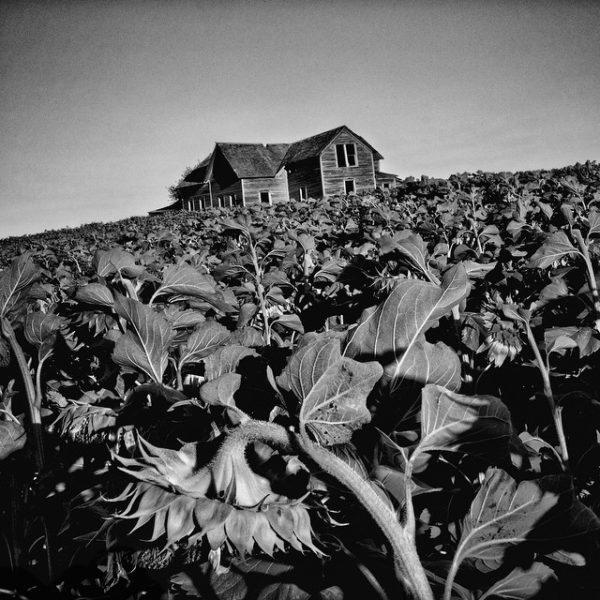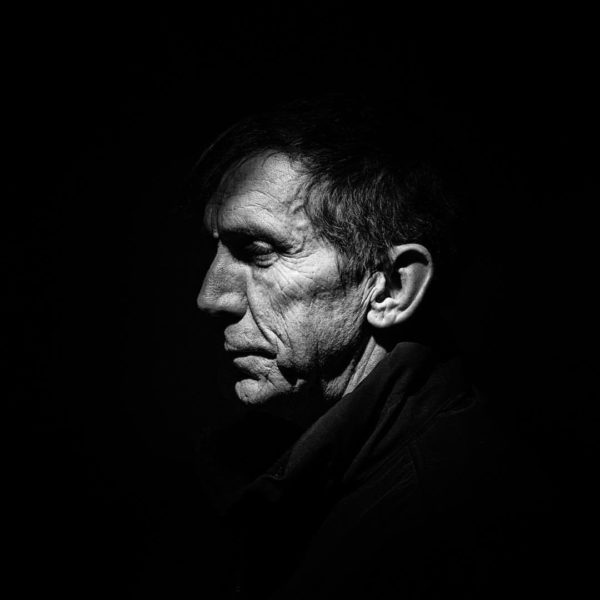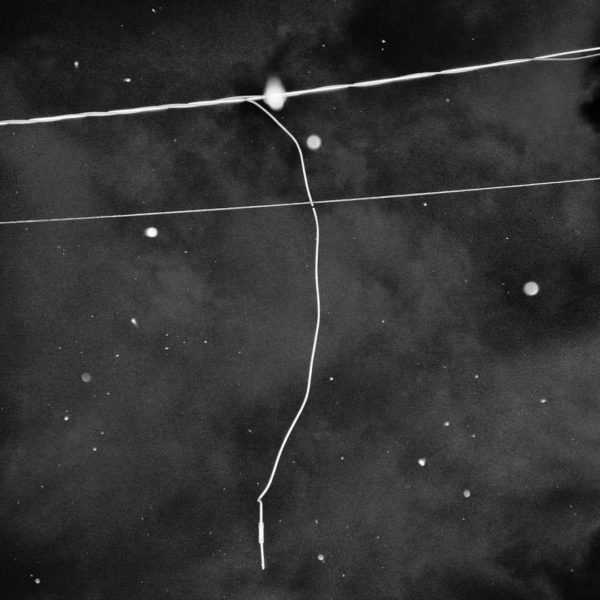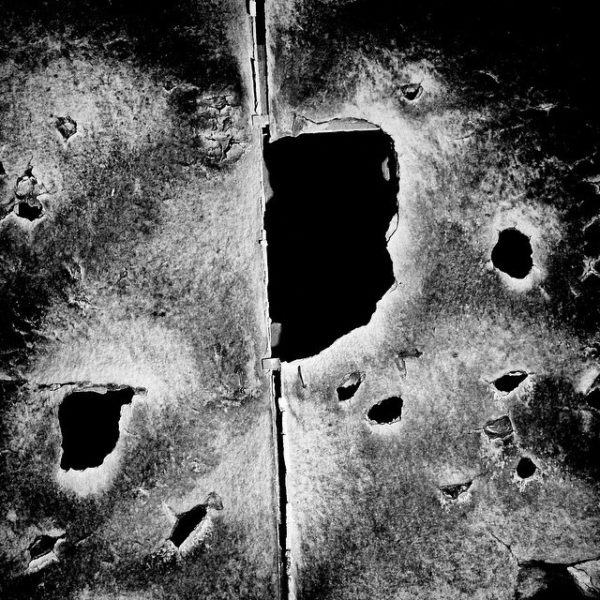Notes
Depicting Poverty: Matt Black Pushes Documentary Photography to its Fullest Range

We know what poverty looks like: unpainted boards, empty windows and door frames, broken roofing. Or it could be sagging fences and telephone poles, or cracked pavement and graffiti-stained concrete walls. Or faded billboards and backlot signage with their ironic injunctions to “dream” or “save.” Or worn faces and bodies scarred by years of hard labor, want, and worry. Such stark, black and white images of abandonment and desolation have become the iconography of documentary photography. They also were a genuine artistic achievement and a major contribution to public life. If you doubt that, consider what it would have been to see only the sunny faces, gleaming suburbs, and beautiful vistas of commercial advertising.
Yet, as with all black and white photography, the documentary images now can seem antique. They evoke an earlier time and a different sense of community: tenements and unions, the dust bowl and the New Deal, Life magazine photo-essays and LBJ’s War on Poverty. One could imagine that by bringing unseen miseries to light, others would respond so that, someday, such photographs would be unnecessary—or even impossible.
That day has yet to come. Photographers still are laboring to expose poverty, which in the US now is getting worse, not better. Poverty rates are rising while it also is becoming more widespread and more persistent. Most important, perhaps, too many in the society and among its so-called leadership are less and less likely to see poverty as their problem, as something affecting their community.
What, then, should a photographer do? Scrap the conventions that served so well in the past—say, to use the color that saturates everyday photography and thus risk superficiality, or to experiment for an audience that doesn’t often reward artistic innovation? Keep recycling the same images in the hope that persistence and some nuance of artistry or change in distribution can make a difference? Or work within the documentary conventions while also developing photography’s overlooked capacities as a medium?
Enter Matt Black, who has been doing really good work to document poverty in the US today. Note that I did not say “compelling” work or “powerful” work; frankly, I am sadly skeptical about the persuasive capacity of documentary photography today, and not because of the photographers. Even if the work does not persuade as it should, however, we need not let the venality and cowardice dominating politics and news media today keep us from learning. And Black has something to teach.

The first lesson comes from his commitment to black and white. Because he also hews so closely to the formal compositions, precise tonalities, and other artistic conventions of the documentary tradition, the resonance with the past is palpable yet without a hint of nostalgia.
And because the point is the subject, rather than the artistry, the implication becomes clear: what should be past is still present.
The fact that poverty looks the same is due not to artistic complacency, but rather the failure of a modern society to achieve its own goals. Although the images do capture specific circumstances of the present, it becomes clear that the names may change while the system remains the same. His use of full range of the classic iconography—for example, the portrait above—does what it always did: communicate the dignity of the individual person while showing how it was sapped by the real conditions of their existence. The hard truth, however, is that people continue to struggle with scarcities that can at best be described as artificial.
No wonder his major project is labeled “The Geography of Poverty.” Systemic, widespread, endemic: he is not focusing on personal stories or individual virtues and vices; he is mapping how poverty is a major problem today, now, this minute and every minute. Doing so takes any photographer to the edge of the medium: how can the camera depict markets and other networks of distribution?
Photography is an archive of fragments, a museum of particularity: single moments in specific places. It shows what was there, then, but not how something can be elsewhere or everywhere. For that, we are told by critics of the medium, one has to turn to writing and to other arts more capable of abstraction.

It is precisely in addressing this predicament that Black excels.
Many of the photographs feature patterns and some are works of abstract art. They have actual referents, of course—power lines, fencing, oil stains—but that is the lesser point. Nor are we being invited to a guessing game, or to admire the artistry, or to conclude that there is beauty even in dire circumstances.
The abstraction is front and center, and it is featured as a normal property of photography. As if one might say: “of course, this is another image of poverty; can’t you see?” Because it is an image of poverty, and these are the second and third lessons: poverty is a system, and its persistence depends on abstraction. There are patterns of deprivation that can be seen. There is a geography to poverty: across the country and in every city and town. It is systemic. And there are patterns that extend indifference. Poverty persists in part because we think of it too often in terms of abstractions: the economy, the poor, market solutions, the working poor, supply and demand, those people. . . .
Because poverty is systemic, it has to be addressed in terms that implicate and obligate the society as a whole. Because it depends on processes of denial that employ abstractions, we have to learn to see it even in abstract images. These several contributions come together in Black’s photographs of found patterns or accidental artworks.

These images also are material records of the daily catastrophes that become bound together in poverty.
The abstraction makes an argument that might be lost in accounts of the particular incidents. There always will be social problems, but it should not be easy to take a photograph of shattered glass at long-shuttered factories, or blood-stained walls, or criss-crossed power lines, or defaced blackboards, or towns that are much too empty.
By creating images that could double as works of fine art, Black challenges a system of public indifference. These are images that should not be possible, or at least not necessary, but here they are, today, showing what is happening everywhere. By drawing on photography’s capacity for abstraction, which also is often unseen, Matt Black is able to confront a system of persistent and unnecessary violence.
-Robert Hariman
Photos: Matt Black/Magnum Photos Caption: Hosmer, SD. Empty farmhouse. Hosmer is a town in Edmunds County, South Dakota. The population is 208 and 28.2% live below the poverty level; Caption 2: Flint, MI. Tim Monahan caught Legionnaires’ disease in June 2014, two months after the city switched to Flint River water. 91 cases of Legionnaires’ have been reported so far, with twelve deaths. “For all intents and purposes, they are getting away with murder,” he said.; Caption 3: Toa Baja, Puerto Rico. Broken utility wires.; Caption: 4; Reading, PA. Shuttered factory. Reading is a city in Berks County, Pennsylvania. The population is 88,082 and 38.7% live below the poverty level.


Reactions
Comments Powered by Disqus